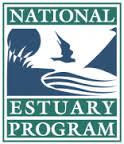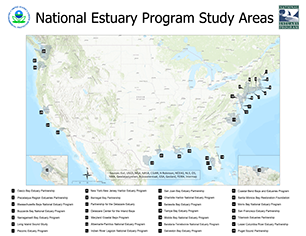Overview of the National Estuary Program
National Estuary Program Booklet

Cover photo credit: Mark Lagrange.
Overview
The National Estuary Program (NEP) is an EPA place-based program to protect and restore the water quality and ecological integrity of estuaries of national significance. Currently, 28 estuaries located along the Atlantic, Gulf, and Pacific coasts and in Puerto Rico are designated as estuaries of national significance. Each NEP focuses within a study area that includes the estuary and surrounding watershed.
The NEPs are located in a variety of institutional settings, including state and local agencies, universities and individual nonprofits. In overseeing and managing the national program, EPA provides annual funding, national guidance and technical assistance to the local NEPs.
The 28 NEPs develop and implement Comprehensive Conservation and Management Plans (CCMPs), which are long-term plans that contain actions to address water quality and living resource challenges and priorities. The NEP challenges and priorities are defined by local, city, state, federal, private and non-profit stakeholders.
Each NEP has a Management Conference (MC) that consists of diverse stakeholders and uses a collaborative, consensus-building approach to implement the CCMP. Moreover, each MC ensures that the CCMP is uniquely tailored to the local environmental conditions and is based on local input, thereby supporting local priorities.
The NEP is a non-regulatory program established by Congress and was authorized by section 320 of the Clean Water Act in 1987.
About the National Estuary Program

- EPA's NEP is a non-regulatory program that improves the waters, habitats and living resources of 28 estuaries across the country.
- Each NEP develops and implements a long-term plan (referred to as a Comprehensive Conservation and Management Plan (CCMP)) based on local priorities to guide their efforts.
- The NEPs involve community members in the decision-making process.

